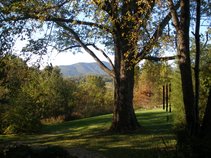Tibet appears to most of the world as a docile, isolated country that succumbed meekly to the historical imperative of Chinese domination. It stands to reason. Tibet is the most Buddhist of nations, one whose spiritual traditions go back thousands of years and whose leader, the Dalai Lama, espouses non-violence with mirthful humility. But appearances do deceive, and in fact the Tibetan people, making peace with their own karma, fought the hated Chinese with a level of rage, tenacity, and savage violence one can hardly associate with Gautama's "middle way."
In a gripping account that covers the period post-WWII to the present day, Buddha's Warriors by author Mikel Dunham describes Tibet's slow descent into war, first baited into infighting by China's divide and conquer strategy and then, realizing China's true intentions, discarding their ancient tribal loyalties to join together as a nation and resist. They mounted warhorses, stockpiled arms and money in Tibet's once vast network of monasteries, and countered a Chinese slaughtering machine with their own.
Dunham spent seven years researching his book, basing his story on first-hand accounts by the Tibetan warriors who fought the Chinese and the impassioned CIA operatives who believed so much in their cause. This is not a tale for the squeamish; Dunham describes in detail unbridled, widespread, and programmatic Chinese sadism that takes ones breath away, and a Tibetan response to the barbarism that shatters the Shangri-la myth. They took no prisoners. What becomes abundantly clear in this story, and is truly troubling, is that even in the heart of Buddhism violence finds a home.
Four key players drive this drama: Mao Tse-Tung, India's Prime Minister Jawaharlal Nehru, Tibetan General Gompo Tashi Andrustsang, and the CIA. Mao echoed the ancient Han dynasty's obsession with the Motherland and simply couldn't countenance an independent Tibet. He skillfully manipulated Nehru whose dream about leading a new Pan-Asian bloc made him blind to Mao's machinations. Gompo Tashi led the Tibetan army (Chushi-Gangdruk) for years, using his charisma and wile to inspire his warriors and inflict frequent defeats on the Peoples Liberation Army. And the group of dedicated CIA case officers coordinated U.S. air drops and covert support for the Chushi-Gangdruk and, over time, became committed to the Tibetan nation and the heroic Tibetans they trained as covert agents.
Note that the Dalai Lama, who wrote the foreword to Buddha's Warriors, is not on the list. Revered by his people then and now, the Dalai Lama's obvious dilemma offers an interesting undercurrent that runs throughout the book. Dunham, perhaps because it is a delicate subject, touches upon it only obliquely: committed to non-violence in a place where only malevolence, revenge, and relentless brutality were the language, the Dalai Lama could only be a pawn in the much larger power game played between Mao, Nehru, the United States, and his own people. In one of the most poignant passages of the book, one can hear the despair in His Holiness's voice, not only for what was happening to his country, but for his inability to do anything about it. "By then, I could not in honesty advise them to avoid violence. In order to fight, they had sacrificed their home and all the comforts and benefits of a peaceful life. Now they could see no alternative but to go on fighting, and I had none to offer."
Dunham describes in vivid detail and offers dramatic testimony how the Tibetan's incandescent love for the Dalai Lama unleashed a passion for his safety that gripped every Tibetan man, woman, and child. The fighting raged, causing horrific carnage. Dunham tells of the many monks, inspired by the revered warrior-King Gesar who had waged war in the eleventh century to protect the dharma in Tibet, who "give back their robes," or renounce their vows, to join the fight. Dunham writes of the reasoning behind the monks' decision that "violence was never a good thing, but an inevitable phenomenon along the savage journey to Enlightenment – war against the enemies of the dharma was a personal choice and not to be judged." Ironically, the monks made excellent warriors with their austere lifestyle and dietary discipline, and the 6,000-plus monastery network provided a "pony express" of sorts, allowing information and arms to flow surreptitiously throughout the country and support surprise victories against the unwary Chinese.
But Tibet was doomed, no matter how hard it fought. Two things worked against it: the high-level corruption, incompetence, and outright treason by some key officials in the Tibetan government; and the multitudes of PLA of which Mao had a seemingly unlimited supply. The Tibetans simply could not fend off the the swarms of Chinese soldiers that filled their valleys.
In the end, the shifting alliances and national interests of China, India, and the U.S., which were at times both poison and antidote to Tibet's desire to be left alone, almost certainly ensured that it will never be its own country again. Buddha's Warriors tells us why that happened, and how this tragedy forced Tibetan Buddhism out of its isolation to engage the world with its deepest truths.



